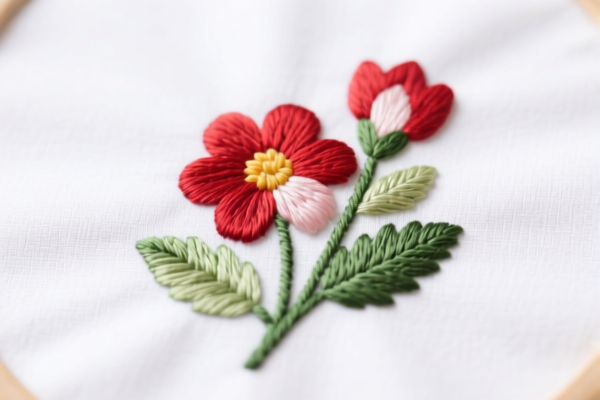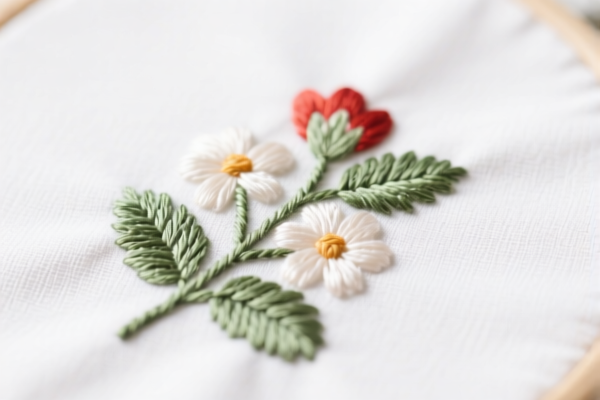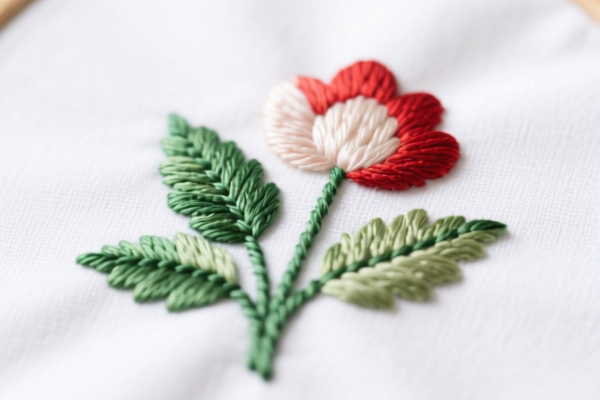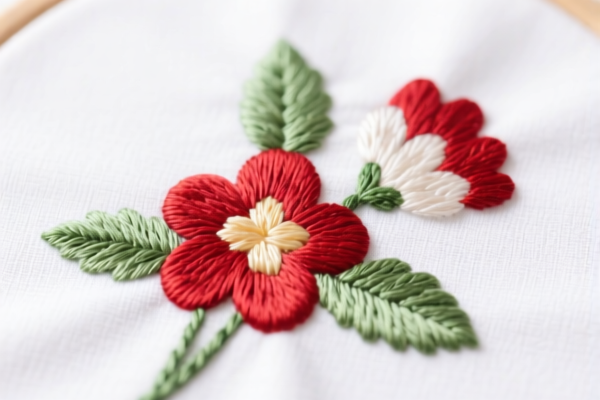| HS Code | Official Doc | Tariff Rate | Origin | Destination | Effective Date |
|---|---|---|---|---|---|
| 5609001000 | Doc | 57.9% | CN | US | 2025-05-12 |
| 5609003000 | Doc | 59.5% | CN | US | 2025-05-12 |
| 5404198080 | Doc | 61.9% | CN | US | 2025-05-12 |
| 5404191000 | Doc | 57.7% | CN | US | 2025-05-12 |
| 5606000010 | Doc | 63.0% | CN | US | 2025-05-12 |
| 5606000090 | Doc | 63.0% | CN | US | 2025-05-12 |
| 5401100000 | Doc | 66.4% | CN | US | 2025-05-12 |
| 5401200000 | Doc | 66.4% | CN | US | 2025-05-12 |
| 5406001020 | Doc | 62.5% | CN | US | 2025-05-12 |
| 5406001040 | Doc | 62.5% | CN | US | 2025-05-12 |
| 4206009000 | Doc | 30.0% | CN | US | 2025-05-12 |
| 4206001930 | Doc | 33.9% | CN | US | 2025-05-12 |
| 4201006000 | Doc | 57.8% | CN | US | 2025-05-12 |
| 5705002090 | Doc | 58.3% | CN | US | 2025-05-12 |
| 5705002015 | Doc | 58.3% | CN | US | 2025-05-12 |




Embroidery Thread
Embroidery thread is a specialized yarn or floss used to create designs on fabric or other materials with a needle and thread. It differs from standard sewing thread in its texture, weight, and often, its composition, being designed for aesthetic appearance as much as durability.
Materials
Embroidery thread is produced from a variety of fibers, each offering unique characteristics:
- Cotton: The most common material, prized for its softness, vibrant color range, and ease of use. Mercerized cotton is a common variant, offering increased strength and sheen.
- Silk: Renowned for its luxurious appearance, natural sheen, and smooth texture. Historically highly valued, it is often used for finer, more delicate work.
- Rayon: A semi-synthetic fiber offering a high sheen and a wide range of colors. It is more affordable than silk but less durable.
- Polyester: A synthetic fiber known for its strength, colorfastness, and resistance to abrasion. It is a good choice for projects that require durability and frequent washing.
- Metallic: Typically polyester or rayon core wrapped with metallic foil, used for adding shimmer and visual interest. Can be more challenging to work with due to its tendency to break.
- Wool: Used for crewel embroidery and other textured work, offering a unique, often rustic appearance.
Purpose
The primary purpose of embroidery thread is decorative stitching. It is used to:
- Create surface designs on clothing, linens, and other textiles.
- Add embellishment to existing fabrics.
- Create free-standing embroidery (FSL), where the thread itself forms the design without a fabric backing.
- Produce artistic representations on canvas or other materials.
Function
Embroidery thread functions by:
- Providing color and texture to a design.
- Creating visual interest through various stitch techniques.
- Securing designs to a fabric base.
- Offering varying degrees of sheen and durability depending on the fiber content.
Usage Scenarios
Embroidery thread is utilized in a wide range of applications:
- Clothing: Embellishing garments with floral designs, monograms, or other decorative motifs.
- Home Decor: Decorating pillows, curtains, tablecloths, and wall hangings.
- Accessories: Creating designs on bags, hats, and scarves.
- Artistic Embroidery: Producing framed artwork and decorative pieces.
- Quilting: Adding decorative stitching to quilt blocks.
- Cross-stitch & Needlepoint: Forming images and patterns on pre-printed fabric.
Common Types
Embroidery thread is categorized in several ways, including:
- Stranded Cotton: The most popular type, consisting of six easily separable strands. Allows for varying thread weights and detail. (e.g., DMC stranded cotton)
- Pearl Cotton: A twisted, lustrous thread available in various weights (sizes 3, 5, 8, 12). Often used for outlining and filling.
- Crewel Wool: A loosely twisted wool thread, ideal for crewel embroidery and textured designs.
- Satin Thread: A smooth, lustrous thread often used for filling large areas with color.
- Metallic Thread: Adds shimmer and visual interest. Available in various colors and weights.
- Variegated Thread: Contains multiple colors blended along the thread length, creating a gradual color change.
- Specialty Threads: Includes glow-in-the-dark, water-soluble, and other unique thread types for specific projects.
Embroidery thread typically refers to a yarn or thread used for decorative stitching on textiles. Based on the provided reference material, several HS codes may be relevant depending on the material composition and specific characteristics of the thread.
- 5401100000: Sewing thread of man-made filaments, whether or not put up for retail sale: Of synthetic filaments (200). This code applies to sewing thread made from synthetic materials. The two-digit sections represent:
- 54: Textile fabrics.
- 01: Sewing thread.
- 10: Specifically, sewing thread made of synthetic filaments.
- 5401200000: Sewing thread of man-made filaments, whether or not put up for retail sale: Of artificial filaments (200). This code applies to sewing thread made from artificial filaments. The two-digit sections represent:
- 54: Textile fabrics.
- 01: Sewing thread.
- 20: Specifically, sewing thread made of artificial filaments.
- 5406001020: Man-made filament yarn (other than sewing thread), put up for retail sale: Synthetic filament yarn Of acrylic (200). This code applies to man-made filament yarn (not sewing thread) put up for retail sale, specifically synthetic filament yarn made of acrylic. The two-digit sections represent:
- 54: Textile fabrics.
- 06: Man-made filaments.
- 00: Yarn (other than sewing thread).
- 10: Specifically, synthetic filament yarn.
- 20: Specifically, acrylic yarn.
- 5406001040: Man-made filament yarn (other than sewing thread), put up for retail sale: Synthetic filament yarn Of polyesters (200). This code applies to man-made filament yarn (not sewing thread) put up for retail sale, specifically synthetic filament yarn made of polyesters. The two-digit sections represent:
- 54: Textile fabrics.
- 06: Man-made filaments.
- 00: Yarn (other than sewing thread).
- 10: Specifically, synthetic filament yarn.
- 40: Specifically, polyester yarn.
According to the provided reference material, the HS code options related to 'embroidery thread' are limited, with only the following 4 found.
It is important to determine whether the embroidery thread is classified as "sewing thread" or "yarn" based on its intended use and characteristics. If it is put up for retail sale, the codes 5406001020 or 5406001040 may be applicable. If it is not put up for retail sale, the codes 5401100000 or 5401200000 may be applicable.
Customer Reviews
Excellent resource for anyone dealing with plastic doors and HS Code 3925. Saved me hours of research.
The information is correct, but the page could use a bit more context on how the tariff rate applies to different product types.
Very helpful details on the HS Code 3925. Made it easier to understand the import regulations for the US market.
The page is well-organized and the tariff info is accurate. It would be even better with a comparison of rates across different countries.
I was looking for HS code details for plastic builder’s doors and this page had exactly what I needed. Highly recommend for exporters.